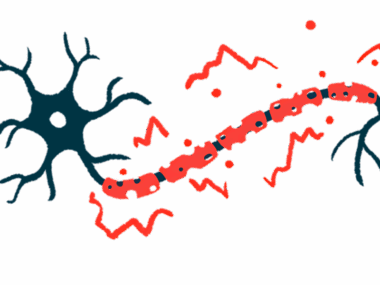Signaling Protein Seen to Help Promote Myelin-making Cells
Written by |

Andrii Vodolazhskyi/Shutterstock
A signaling protein called fractalkine helps to regulate the development of oligodendrocytes, cells of the nervous system responsible for making myelin — the protecting coating of nerve cell fibers that is damaged and lost in multiple sclerosis (MS).
This finding was in the study, “Fractalkine signaling regulates oligodendroglial cell genesis from SVZ precursor cells,” published in Stem Cell Reports.
Myelin is a fatty substance that surrounds neurons (nerve cells) like a sheath, helping them to efficiently send electrical signals. In MS, the immune system erroneously attacks the myelin sheath, damaging and killing neurons.
Neural precursor cells, or NPCs, are a type of stem cell that is able to grow and differentiate into several different types of the cells of the nervous system, including oligodendrocytes — the cells that make myelin. When NPCs differentiate into oligodendrocytes, a process called oligodendrogenesis, they first become an intermediary cell type, called an oligodendrocyte precursor cell (OPC), before growing into a mature oligodendrocyte.
The biological mechanisms governing how NPCs grow into OPCs, and then into oligodendrocytes, are still being worked out. A team led by researchers in Canada conducted a series of experiments in cell models and mice to evaluate the role of fractalkine (FKN), a signaling protein, in oligodendrogenesis.
They first confirmed that both NPCs and OPCs express the receptor for FKN (called CX3CR1), which is in line with prior data.
Researchers then tested the effect of treating NPCs in vitro (in laboratory settings) with varying amounts of fractalkine. After a few days in culture, they found substantially more oligodendrocytes present in cells treated with FKN. Fractalkine’s use, however, did not affect numbers of other cell types, such as neurons, produced by the NPCs.
FKN also did not change how quickly the cells were dividing, or affect cell death and survival. Instead, the researchers found that the signaling molecule accelerates oligodendrogenesis, prompting OPCs to grow into mature oligodendrocytes more quickly. Consistently, when the researchers blocked FKN signaling, oligodendrocyte formation decreased.
Further experiments, which involved injecting FKN into the brains of mice, showed generally consistent results, supporting the idea that FKN helps to regulate oligodendrogenesis in living animals. Work also demonstrated that OPCs themselves secrete FKN, which may play a role in how the signaling molecule naturally works to affect oligodendrogenesis.
This research mainly involved NPCs from the subventricular zone, or SVZ, a part of the brain where oligodendrogenesis normally occurs. Nonetheless, experiments looking at cells in a different brain region — the cerebellum — found generally consistent results.
“Our data demonstrate a novel role for FKN signaling in postnatal oligodendrogenesis from SVZ precursor cells, and suggest that FKN is a candidate molecule for engagement of CNS [central nervous system, the brain and spinal cord] precursor cells for oligodendrocyte production and, possibly, remyelination,” the team concluded.
These results open several areas for further research, the team noted. For instance, “it will be important to determine whether applying FKN after a demyelinating injury [i.e., a lesion where myelin has been damaged, as occurs in MS] can elicit enhanced oligodendrogenesis and remyelination,” the scientists wrote.
Another need is to further explore the role of this signaling molecule in the nervous system. They suggested that future studies also look into genetic variations related to FKN signaling that could affect health and disease.
“Our findings support future investigations to test the ability of FKN to recruit CNS precursor cells for enhanced oligodendrocyte genesis in injured or diseased CNS, as well as the contribution of CX3CR1 variants to the development and progression of myelin-related deficits in neurodegenerative and neurodevelopmental disorders,” the researchers concluded.





